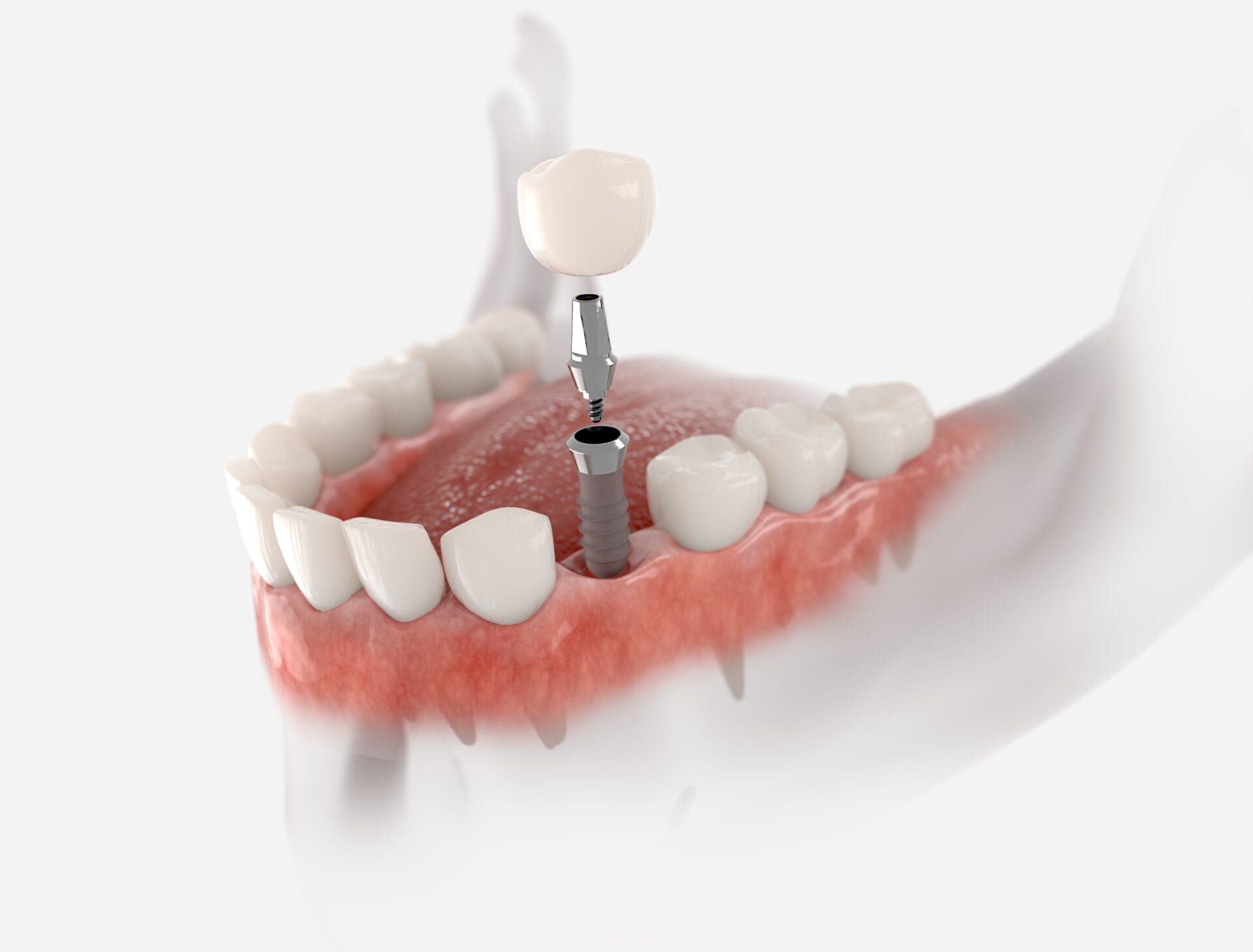Experience the current Developments in Dental Implants Modern Technology
As the field of dentistry remains to develop, the improvements in oral implant technology have been nothing short of remarkable. From using sophisticated materials that improve toughness to the execution of electronic imaging for accurate positioning, these advancements are changing the landscape of dental treatment. With minimally invasive medical methods and the personalization capacities of 3D printing, clients currently have actually accessibility to tailored solutions that were as soon as inconceivable. In addition, the assimilation of innovation is changing the performance of dental implants, guaranteeing enhanced results and client complete satisfaction.
Advanced Materials for Boosted Longevity
In the realm of oral implants modern technology, the assimilation of advanced products has actually considerably added to boosting longevity and longevity of these vital dental prosthetics. The usage of products such as titanium alloys, zirconia, and ceramic compounds has reinvented the area by providing boosted toughness, biocompatibility, and resistance to rust.
Titanium alloys are extensively used in oral implants as a result of their remarkable strength-to-weight proportion, deterioration resistance, and compatibility with the body. These alloys make certain the stability and long life of the dental implant by holding up against the forces applied during chewing and speaking, offering a trusted service for individuals looking for sturdy tooth substitutes.
Zirconia, a kind of ceramic product, has actually gained popularity for its biocompatibility and all-natural tooth-like look. Its high strength and resistance to put on make it a suitable choice for dental crowns and bridges, enhancing the overall aesthetic appeals and capability of the implant.

Digital Imaging for Accurate Placement
The evolution of dental implants innovation has better progressed with the combination of electronic imaging strategies, guaranteeing exact placement of these prosthetics for optimal useful and visual results. Digital imaging plays a vital function in the planning and positioning of dental implants by offering comprehensive 3D pictures of the person's jawbone framework. This innovation enables dental practitioners to assess bone thickness, find vital frameworks, and intend the specific setting and angle for implant positioning with exceptional accuracy.
By using digital imaging, dentists can produce virtual medical guides that work as a roadmap throughout the implant positioning procedure. These overviews are personalized for each and every patient, thinking about their distinct makeup and the desired end result. This level of accuracy not only boosts the success rate of oral implant procedures yet likewise minimizes the threat of problems.
Furthermore, digital imaging allows dental professionals to visualize the final prosthetic reconstruction before the real placement of implants, permitting precise planning and guaranteeing that the outcome fulfills the client's visual assumptions. In general, the assimilation of electronic imaging innovation has actually revolutionized the field of dental implants, offering people a more foreseeable, effective, and patient-specific therapy strategy.

Minimally Invasive Surgical Methods


Innovations in medical strategies have actually led to the development of minimally intrusive strategies in the area of dental implantology. These techniques intend to decrease injury to the client, shorten recuperation times, and boost general treatment outcomes. Minimally intrusive medical procedures involve smaller sized cuts, specialized tools, and progressed imaging innovations to precisely position oral implants with minimal interruption to bordering tissues.
One trick element of minimally invasive strategies is the use of led surgical procedure, where 3D imaging and computer-aided style software application are used to prepare the implant placement with terrific accuracy. This allows for an extra predictable end result and check here can commonly eliminate the demand for comprehensive flap surgical procedure.
Additionally, advancements in products and implant layout have additionally added to the success of minimally intrusive methods. Implants with boosted surface area properties promote faster osseointegration, decreasing the recovery time called for prior to the prosthetic restoration can be put.
3D Printing for Custom-made Solutions
Using 3D printing modern technology in dental implantology permits the creation of highly personalized solutions tailored to private person requirements and physiological variations. This innovative modern technology enables dental specialists to develop and make oral implants with outstanding accuracy and precision. By utilizing digital imaging techniques, such as cone light beam calculated tomography (CBCT), comprehensive 3D versions of the person's mouth can be created to guide the implant planning process.
Among the crucial benefits of 3D printing in oral implantology is the capacity to develop patient-specific implants that perfectly fit the unique composition of each person. This tailored approach helps improve the general success and durability of the dental implant by ensuring optimal fit and alignment. Additionally, 3D printing enables for the manufacturing of intricate geometries and complex frameworks that would certainly be difficult or impossible to achieve making use of standard production methods.
Furthermore, 3D printing innovation enables dental professionals to streamline the implantation process, minimizing surgery time and enhancing total patient experience. With its capacity to develop personalized options rapidly and efficiently, 3D printing pop over here is transforming the field of oral implantology, offering people ingenious treatment options and boosted results.
Integrated Innovation for Improved Performance
Executing advanced modern technology in oral implantology improves functionality and accuracy, boosting the requirement of take care of people undergoing dental implant procedures. Integrated innovation plays a vital role in boosting the overall success and resilience of oral implants. One essential advancement is the assimilation of digital scanning and imaging modern technologies, such as cone-beam computed tomography (CBCT) and intraoral scanners. These tools allow for thorough 3D imaging of the client's dental structures, assisting in accurate therapy planning and dental implant positioning.
Furthermore, the combination of computer-aided layout and computer-aided production (CAD/CAM) have a peek at this site technology allows the production of custom dental implant remediations with phenomenal accuracy. CAD/CAM systems utilize electronic impacts to develop prosthetics that completely fit the individual's one-of-a-kind anatomy, guaranteeing optimum convenience and functionality. Additionally, making use of robotic-assisted surgical treatment in dental implant positioning boosts precision and minimizes the risk of human error.
Conclusion
To conclude, the most current technologies in oral implants technology deal boosted durability through sophisticated materials, specific positioning with electronic imaging, minimally invasive surgical strategies, tailored remedies with 3D printing, and boosted capability with incorporated innovation - Dental implants Kent. These improvements in oral implants modern technology are changing the area and offering clients with more efficient and efficient treatment choices for recovering their smiles and dental wellness
The integration of modern technology is transforming the functionality of dental implants, promising enhanced outcomes and individual fulfillment.
The evolution of oral implants technology has actually even more progressed with the integration of electronic imaging strategies, guaranteeing exact placement of these prosthetics for ideal functional and aesthetic end results. Minimally invasive surgical treatments involve smaller sized incisions, specialized instruments, and progressed imaging technologies to specifically place dental implants with marginal disruption to surrounding cells.
Implementing sophisticated technology in dental implantology improves capability and precision, raising the criterion of care for clients going through implant procedures. Dental implants Kent. Integrated modern technology plays a vital duty in improving the general success and resilience of dental implants